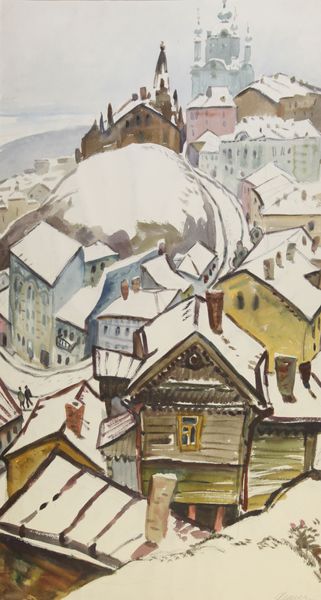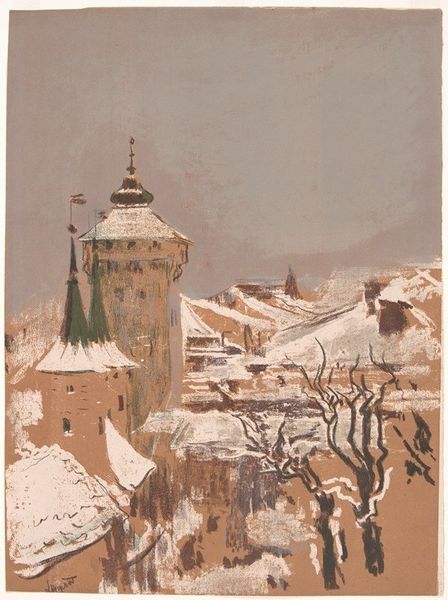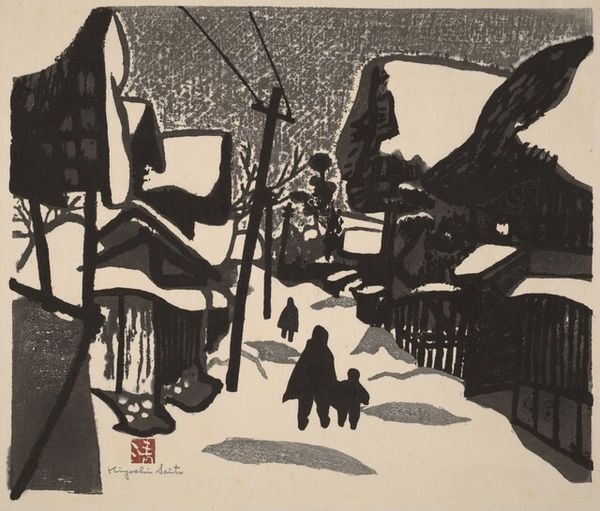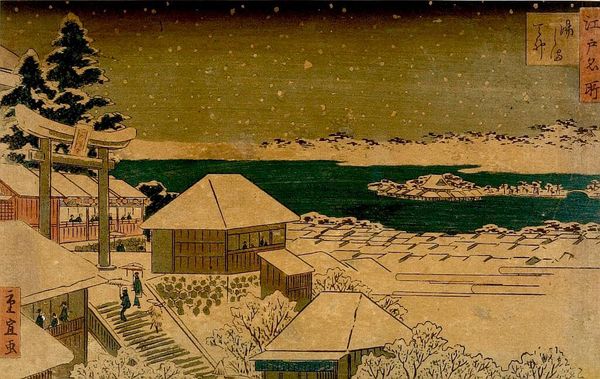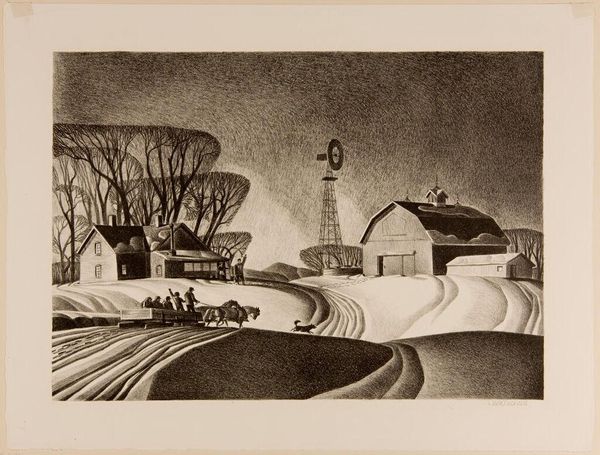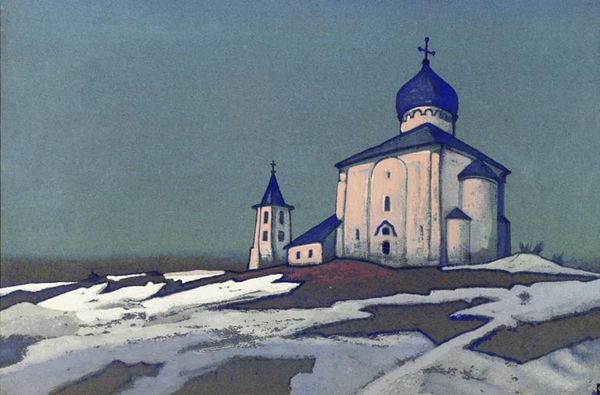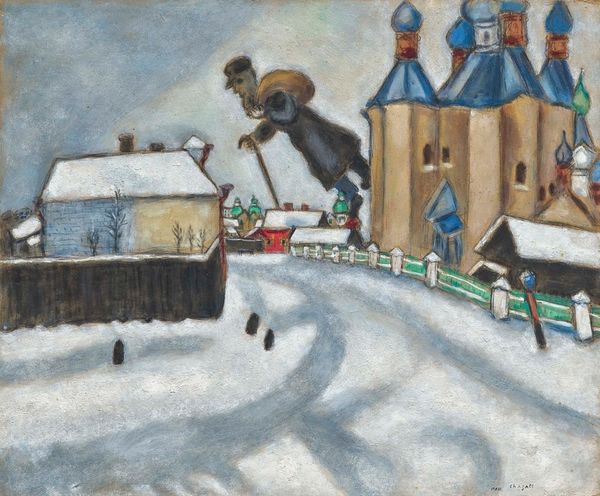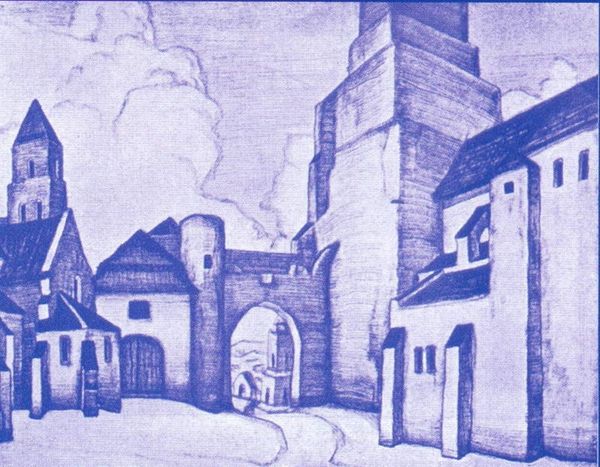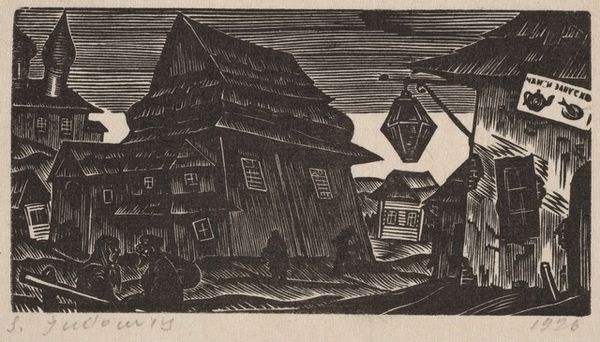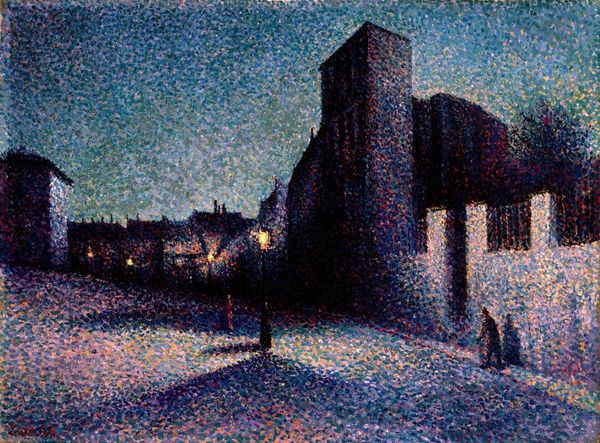
painting, oil-paint
#
allegories
#
symbol
#
painting
#
oil-paint
#
landscape
#
oil painting
#
symbolism
#
history-painting
Copyright: Public domain
Editor: Here we have Nicholas Roerich’s oil painting "Repentance" from 1917, currently housed in the Nicholas Roerich Museum. The subdued palette and heavy snowfall really give it a somber, almost mournful, feeling. How do you interpret the composition? Curator: It's fascinating how Roerich uses form to evoke such strong emotion. The painting is dominated by the architecture. The monumental forms create a dialogue between permanence and fragility, especially when juxtaposed with the falling snow, which partially obscures and softens the angularity. Have you considered how the light functions here? Editor: It’s interesting you point that out because the shadows feel very stark. I’m drawn to the solitary figure by the steps; their darkness almost seems to disappear against the church walls. Curator: Precisely. Notice the strategic placement of the figure in relation to the building’s mass, suggesting an encounter with the divine or perhaps spiritual contemplation. The color palette is certainly constrained, mostly dark tones; it's the textural brushstrokes building the facade which introduce visual intrigue. Roerich uses repetition and variation through small window groupings which, from a formal perspective, contributes to both harmony and visual rhythm across the composition. What do you make of that visual strategy? Editor: Now that you mention it, I think I was missing the intention. I had perceived the composition as a bit oppressive but I now see how the visual rhythm gives the structure almost a life-like essence, even if that life is quiet. Curator: Indeed. The strategic manipulation of artistic elements such as texture, tonal control and monumental shapes can convey emotions very intensely and are really engaging formal achievements in symbolist landscape. Editor: I now have a better sense of how the starkness I felt in the color actually allows for Roerich’s compositional techniques to have a more direct and affective presence. Thanks for elucidating.
Comments
No comments
Be the first to comment and join the conversation on the ultimate creative platform.

